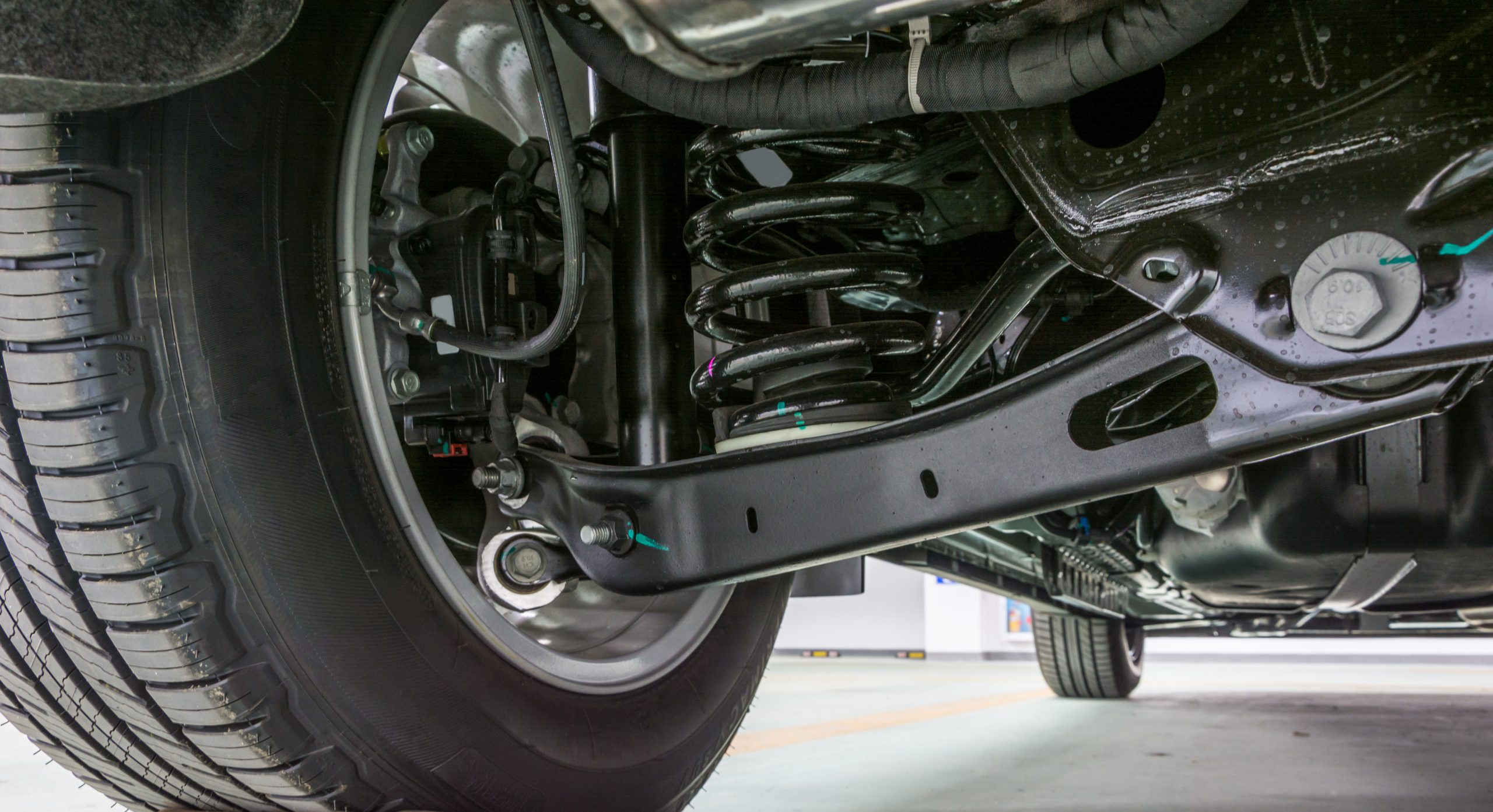

Your vehicle’s suspension is an important system that not only supports the weight of your vehicle, but it works hard to cushion you and your passengers from the shock impulses of the road. Because not all road surfaces are created equal, the suspension works to absorb the energy created by bumps, potholes, and uneven road hazards. This cushioning allows for a smoother driving experience. One of those dampening components in your suspension are your vehicle’s shock absorbers or struts. In this month’s blog, we discuss the function of shocks or struts, and what can go wrong with them when they are damaged or worn.
Shocks or Struts
Despite what most people think, shocks and struts are not the same component. While these terms are sometimes used interchangeably, your vehicle will have either one or the other.
- Shocks: Shock absorbers are thin, cylindrical shaped pistons that are usually controlled hydraulically (with fluid). They are located at each of your vehicle’s wheels and absorb the extra energy from your suspension. With the release of fluid, they work to convert the energy into thermal energy.
- Struts: Similar to shocks, the struts are used to damper the kinetic energy coming from your vehicle’s suspension. The main difference between shocks and struts is that the strut is part of the suspension system – called the strut assembly. The strut assembly is comprised of a shock, frame, and spring. In addition to being a damper for road bumps, the strut is also used to help support the weight of your vehicle.
Symptoms of Shock or Strut Problems
The main function of shocks or struts is to absorb kinetic energy, so it does not impact the vehicle handling and comfort of its passengers. However, because of their function, shocks or struts are subjected to a high amount of stress and can become damaged through negative interactions with rough road surfaces or debris. Many times, this may result in malfunctions like fluid leaks that can lead to bigger problems.
Some of the common symptoms that you may see or experience when shocks or struts are failing include:
- Excessive vehicle vibration while driving
- Uneven and unexplained wearing of your tires
- Nose-diving of the vehicle front when braking
- Bouncing, rocking, or swaying during operation or turning
- Decreased driving and handling performance
- Squeaking or knocking sounds when driving over bumps or rough road surfaces
If you are noticing these obvious symptoms, it is advisable to have your vehicle’s suspension inspected sooner than later. While many of these symptoms create an annoyance for drivers, they also present a safety hazard if they are not addressed.
Maintenance for Shocks or Struts
Maintaining your suspension system involves a combination of good driving habits, and periodic servicing.
Good driving habits include being more alert to road hazards, keeping off rough road surfaces, and using discretion when driving over bumps or through potholes.
Periodic maintenance tasks include:
- Getting tires rotated and/or balanced
- Lubricating steering components
- Checking for and addressing any signs of fluid leaks
- Replacing shocks or struts every 50K miles driven – especially if you drive heavy or on rough roads.
Another important preventative maintenance for shocks or struts is to have them inspected by a service professional during routine maintenance appointments. During an inspection, they will look for signs of damage, wear and tear, corrosion, or fluid leaks. Contact the professionals at Car Kings today to schedule your suspension system inspection.
